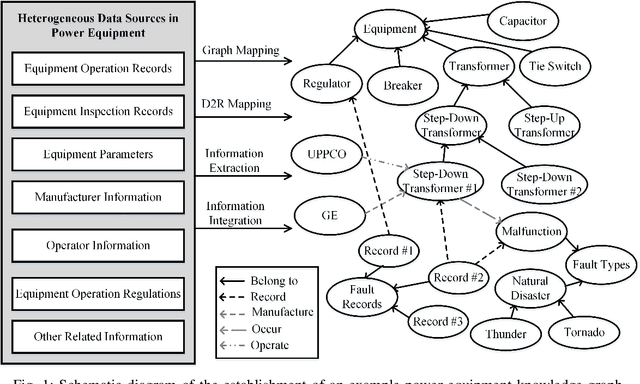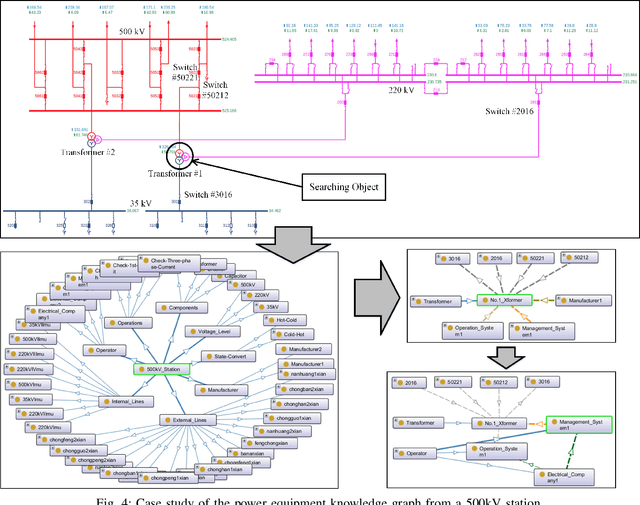Yachen Tang
An Intelligent Question Answering System based on Power Knowledge Graph
Jun 16, 2021



Abstract:The intelligent question answering (IQA) system can accurately capture users' search intention by understanding the natural language questions, searching relevant content efficiently from a massive knowledge-base, and returning the answer directly to the user. Since the IQA system can save inestimable time and workforce in data search and reasoning, it has received more and more attention in data science and artificial intelligence. This article introduced a domain knowledge graph using the graph database and graph computing technologies from massive heterogeneous data in electric power. It then proposed an IQA system based on the electrical power knowledge graph to extract the intent and constraints of natural interrogation based on the natural language processing (NLP) method, to construct graph data query statements via knowledge reasoning, and to complete the accurate knowledge search and analysis to provide users with an intuitive visualization. This method thoroughly combined knowledge graph and graph computing characteristics, realized high-speed multi-hop knowledge correlation reasoning analysis in tremendous knowledge. The proposed work can also provide a basis for the context-aware intelligent question and answer.
Enhancement of Power Equipment Management Using Knowledge Graph
Apr 28, 2019



Abstract:Accurate retrieval of the power equipment information plays an important role in guiding the full-lifecycle management of power system assets. Because of data duplication, database decentralization, weak data relations, and sluggish data updates, the power asset management system eager to adopt a new strategy to avoid the information losses, bias, and improve the data storage efficiency and extraction process. Knowledge graph has been widely developed in large part owing to its schema-less nature. It enables the knowledge graph to grow seamlessly and allows new relations addition and entities insertion when needed. This study proposes an approach for constructing power equipment knowledge graph by merging existing multi-source heterogeneous power equipment related data. A graph-search method to illustrate exhaustive results to the desired information based on the constructed knowledge graph is proposed. A case of a 500 kV station example is then demonstrated to show relevant search results and to explain that the knowledge graph can improve the efficiency of power equipment management.
 Add to Chrome
Add to Chrome Add to Firefox
Add to Firefox Add to Edge
Add to Edge